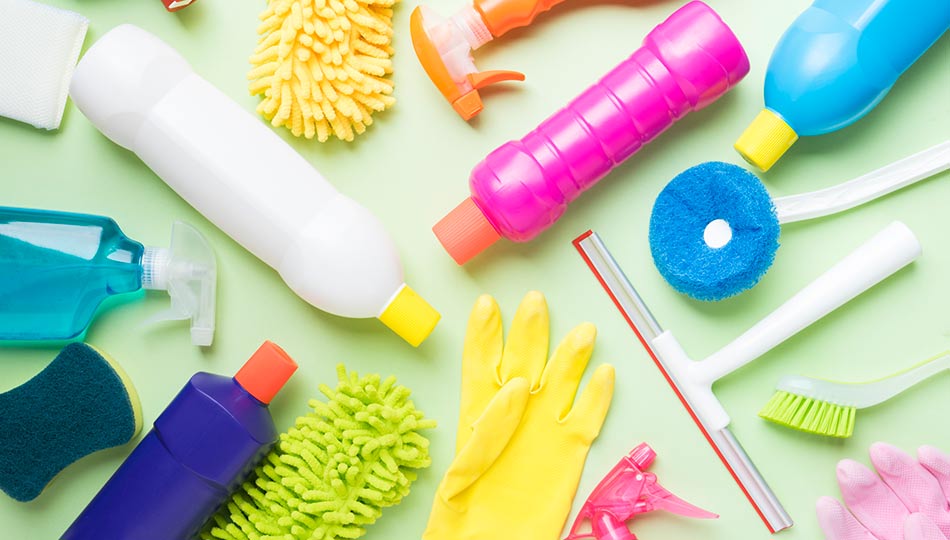Chemicals in cleaning products
Chemicals make your cleaning products work. It is important that you always check the labels to use them in a safe way.

Laundry detergents, all-purpose cleaners, washing-up liquids – they all contain substances called surfactants or surface active materials. They reduce the surface tension between water and grease (liquid oil or solid fat) so that the two can mix, water can get a hold of the grease and wash it away. That is why we wash dirty clothes with detergent – the detergent can remove dirt in a solid or liquid form.
If you look at the ingredients of a cleaning product, you will see many other chemicals, too. For example, biological detergents contain enzymes. These help to break up and remove grease, but also food and other deposits. Different chemicals are also used to provide scents or colour to a product or to help preserve it.
Regulation for safer products
In the EU, different rules aim to make the use of cleaning products safer. For example, the regulation on classification, labelling and packaging of chemicals – the CLP Regulation – regulates the way that chemicals and products containing them are labelled and packaged. If the product contains hazardous chemicals, it must be labelled with a pictogram and an explanation of what it means. This helps consumers to handle the product safely and gives advice on what to do in case of an accident.
The detergent regulation ensures that only detergents with fully biodegradable surfactants may be placed on the market. In addition, their labels must contain information on the products’ ingredients and the right dosage. This protects consumers against allergies and helps to avoid the over-use of detergents.
What about the packaging?
The CLP Regulation also aims to make the packages safer for children. Cleaning products containing dangerous chemicals should not look attractive to children and they should not look similar to food or medicine packages. Some must also be fastened in a way that stops children from easily opening them – for example, with a cap that requires the use of both hands to open.
Liquid detergent capsules must be resistant to pressure and may not dissolve too quickly. They contain a flavouring agent that causes a repulsive effect if a child puts the capsule in their mouth. Also, the outer packaging of the single-use capsules must be opaque to make it more difficult for children to see the individual capsules inside.
Tips for safer use
- Check the labels of the products you use and follow the instructions to make sure you handle and store them in a safe way. Hazard pictograms show what kind of damage the product can cause to your health or the environment. Labels also have information on what to do if there is an accident.
- Prefer environmentally-friendly detergents with an official ecolabel – for example, the EU ecolabel or the Nordic ecolabel.
- Always use cleaning products according to the instructions. Some products can cause allergic reactions and irritate the skin and eyes. For example, drain unblockers and toilet cleaners may contain corrosive substances which can cause severe skin burns and damage eyes. Dishwasher detergents, decalcification agents and oven cleaners may also seriously harm your health if not handled properly.
- Remember to store your cleaning products away from the reach of children or pets. Be also careful to not mix different cleaning products together or to change their container to store content.
Read more
- Articles and chemical products - Swedish Chemicals Agency
- Keep caps from kids - International Association for Soaps, Detergents and Maintenance Products
-
Cleanright - International Association for Soaps, Detergents and Maintenance Products
Previous Next Layout
Read Also
-
 Hints & Tips
Hints & TipsRead the labels
Safety at work starts from knowing and understanding the labelling and safe use instructions of hazardous chemicals. By law, chemical suppliers have to classify their substances and mixtures. Learn the labels and stay safe!
READ MORE -
 general
generalFirst aid for chemical exposure
Poisons are substances that cause harm when you ingest them, breathe them in or they come into contact with your skin or eyes. Even if you are extremely careful and make sure your chemicals are stored out of reach, exposure can still happen. If it does, your national poison centre is there to help you.
READ MORE
